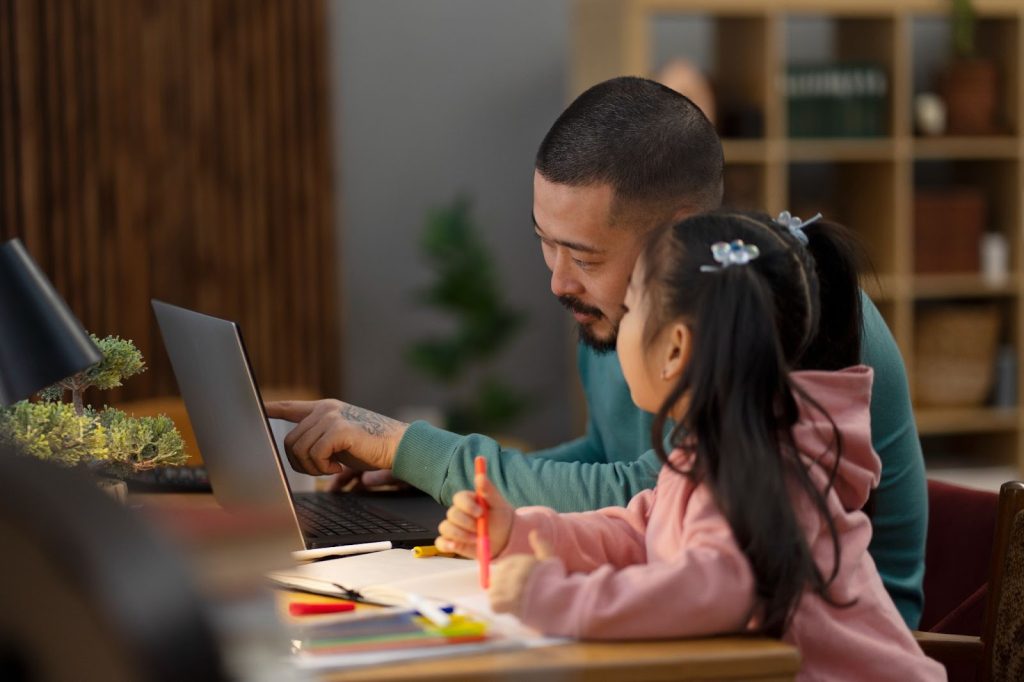
September 5, 2025

Bridging language gaps at home – particularly supporting both English and your child’s mother tongue – has become a growing priority for many Singaporean families. English fluency is essential for academic success in Singapore, but nurturing your child’s mother tongue plays an equally important role in strengthening cultural identity and family connections.
Whether your child is just starting their phonics journey or preparing for primary school assessments, this guide offers practical, parent-friendly strategies to support bilingual growth, while keeping things fun, meaningful, and aligned with MOE standards.
Supporting your child in both English and their mother tongue offers more than communication skills. It gives them a cognitive, academic, and emotional head start. Bilingual children have been shown to:
In Singapore’s highly competitive academic system, these skills can give your child a clear edge, from comprehension exercises to oral presentations.
Language is also a bridge to heritage and belonging. When children understand and speak their mother tongue, they can connect more meaningfully with grandparents and extended family. They gain access to stories, festivals, traditions, and values that shape their identity, thus creating a sense of pride and rootedness that complements academic achievement.
Creating a home environment where both English and your child’s mother tongue can flourish doesn’t require complex strategies, just consistency, intention, and a little creativity. When children are regularly exposed to both languages in ways that feel natural and relevant, they develop stronger confidence and fluency in each. Everyday routines, from storytime to mealtimes, can become valuable learning moments.
Here are some simple but effective ways to weave both languages into your child’s daily life, making bilingual learning part of the family rhythm.
Rather than translating every word, assign each language a purpose:
This teaches your child when and how each language is used naturally, building fluency with real-life context.
Use simple tools like labeling household items in both English and the mother tongue. Narrate your daily routines, switching between languages. Example:
The repetition, rhythm, and visuals make it easier for children to absorb new vocabulary and grammar intuitively.
Explore local libraries or download language apps that blend visuals, stories, and songs for immersive learning. Choose fun, age-appropriate content in both languages:
If your child has siblings or friends who speak the same or different languages, encourage conversations in both. Role-playing, board games, and storytelling in multiple languages help children switch contexts confidently – a critical skill for exams and everyday interaction.
As your child progresses through school, strong language skills in both English and their mother tongue become essential for academic achievement. To help your child feel more confident and prepared, it’s important to align your support at home with what’s being taught in class.
Stay Updated on School Curriculum
Get familiar with MOE’s curriculum for both English and mother tongue subjects. Know what’s expected – from vocabulary lists to composition styles – so you can guide practice sessions more effectively at home. Ask your child’s teacher for assessment formats or recent spelling lists. This alignment makes home revision smoother and less stressful.
Set aside short, regular reading and writing time in both languages:
This routine builds their confidence for schoolwork while improving literacy in both languages.
Even in language-rich households, it’s perfectly normal for children to face challenges when learning and using two languages. Some may mix words from different languages in a single sentence, while others may strongly prefer one over the other. These moments can feel discouraging, but they’re a natural part of bilingual development. The key is to respond with patience, consistency, and strategies that build positive associations with both languages.
Don’t be alarmed if your child blends languages while speaking. It’s actually a sign they’re processing both systems at once. This phenomenon, called code-switching, is common in early bilingual development and not a cause for concern. Rather than pointing out mistakes or forcing corrections, model the correct usage naturally in your response. For example, if your child says, “I want to makan now,” you might reply, “You want to eat? Let’s eat lunch together.”
These gentle reinforcements create a supportive environment where your child can experiment with language safely – an important step in gaining confidence and fluency.
If your child avoids speaking in their mother tongue or shows low interest in learning it, try shifting the approach. The goal isn’t to force fluency but to reignite curiosity and connection.
Here’s how you can gently reintroduce the language in ways that feel fun, relevant, and personal:
Most importantly, avoid turning language learning into a battle. Celebrate every small effort, even a single new word, and keep the environment light and encouraging. Consistent, positive exposure is more effective than one-off lessons or forced corrections.
Professional support can reinforce what you do at home. At Jan & Elly, our focus goes beyond phonics. We nurture confident communicators through engaging, age-appropriate English programmes that are aligned with Singapore’s curriculum.
Our small class sizes and storytelling-based methods make learning English something your child will look forward to.
Speak with your child’s educators regularly – both for English and mother tongue. Share what’s working at home and ask for tips on how to handle specific challenges. This two-way support ensures your child receives consistent guidance across school and home.
Don’t wait for report cards – celebrate the small wins like:
Positive reinforcement fuels their motivation and turns learning into something they’re proud of.
Helping your child succeed in both English and their mother tongue isn’t about perfection; it’s about consistency, encouragement, and relevance. When families actively support language learning at home and partner with the right educators, children grow into articulate, empathetic, and culturally aware individuals.
And if you ever need help with that first step into phonics or primary prep, Jan & Elly is here to support your child’s journey – one word, one sentence, one story at a time.
